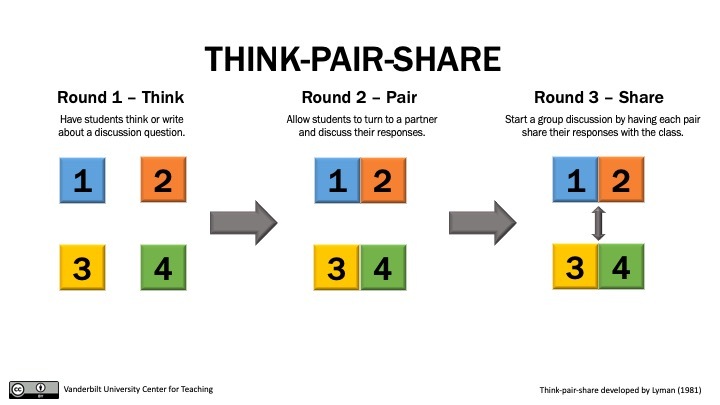e-Learning Ecologies MOOC’s Updates
Harnessing Collaborative Intelligence through Think-Pair-Share in e-Learning
Greetings, fellow learners and educators!
Today, I'm thrilled to introduce a powerful concept that's reshaping the landscape of online education: Collaborative Intelligence. This concept is not just about pooling knowledge or working in groups; it's about leveraging the collective cognitive capabilities of individuals to solve problems, generate new ideas, and foster innovation in learning environments.
Defining Collaborative Intelligence
Collaborative Intelligence (CI) refers to the capacity of a community or group to combine their efforts, knowledge, and skills to achieve a common goal or solve a complex problem. It's about creating a synergistic environment where individual contributions are valued, but the collective output is greater than the sum of its parts. CI is particularly potent in e-Learning ecologies, where digital tools and platforms facilitate seamless collaboration across distances.
Think-Pair-Share: A Model for Collaborative Learning
A prime example of Collaborative Intelligence in action is the "Think-Pair-Share" methodology [1]. This instructional strategy is divided into three phases:
- Think: Students begin by thinking independently about a given question or problem. This phase encourages individual reflection and idea generation, laying the groundwork for deeper engagement.
- Pair: Next, students pair up or form small groups to discuss their thoughts and perspectives. This interaction fosters peer learning, as students articulate their reasoning, challenge assumptions, and refine their ideas through dialogue.
- Share: Finally, each pair or group presents their findings or solutions to the larger class. This stage not only promotes knowledge sharing but also enhances communication skills and builds confidence.
Practical Application in e-Learning
In an online course on sustainable development, for example, learners might engage in a Think-Pair-Share task to explore innovative solutions to reduce carbon emissions. Initially, students independently research and contemplate various strategies. Then, in virtual breakout rooms, they discuss their findings, combining insights to devise a comprehensive plan. The culmination of this task is a group presentation delivered via a video conferencing platform, allowing for class-wide feedback and further discussion.
Benefits and Challenges
The Think-Pair-Share model leverages CI by encouraging a dynamic exchange of ideas, enhancing critical thinking, and building a sense of community among online learners [2]. However, its success hinges on effective facilitation, clear communication, and the thoughtful integration of digital tools to support each phase of the process.
Conclusion
Collaborative Intelligence, showcased through Think-Pair-Share, offers a transformative approach to learning that is ideally suited to the digital age. By embracing CI, we can create more engaging, effective, and inclusive e-Learning experiences that prepare students to thrive in a complex, interconnected world.
[2] Mundelsee, L.and Jurkowski, S. 2021, Think and pair before share: Effects of collaboration on students' in-class participation. Learning and Individual Differences, Volume 88, May 2021, 102015. https://doi.org/10.1016/j.lindif.2021.102015



Collaborative intelligence had made challenging issues or problems quite simple due group involvement in solving problems.i am impressed by way you have clearly articulated collaborative intelligence by means of think,pair and share.